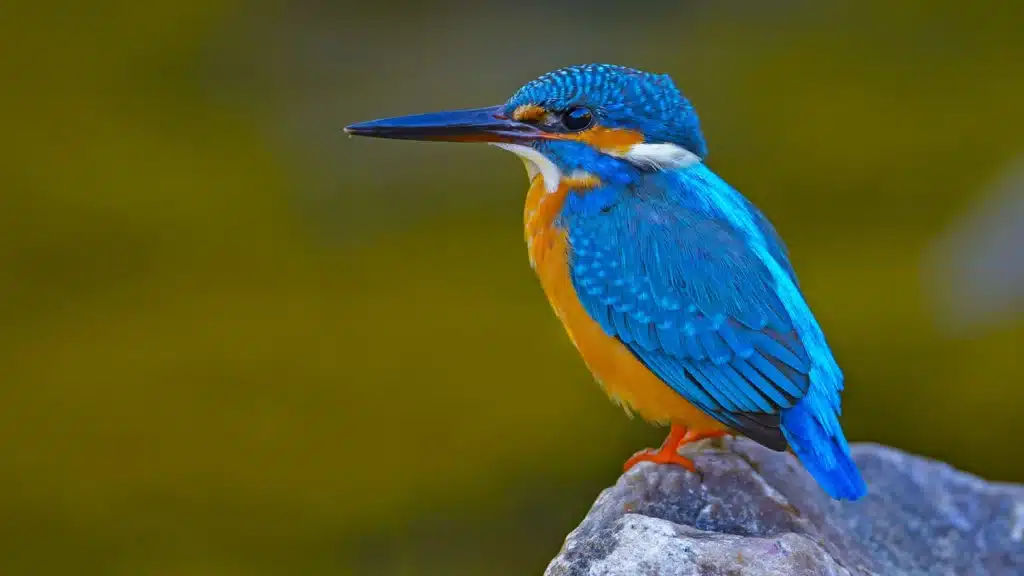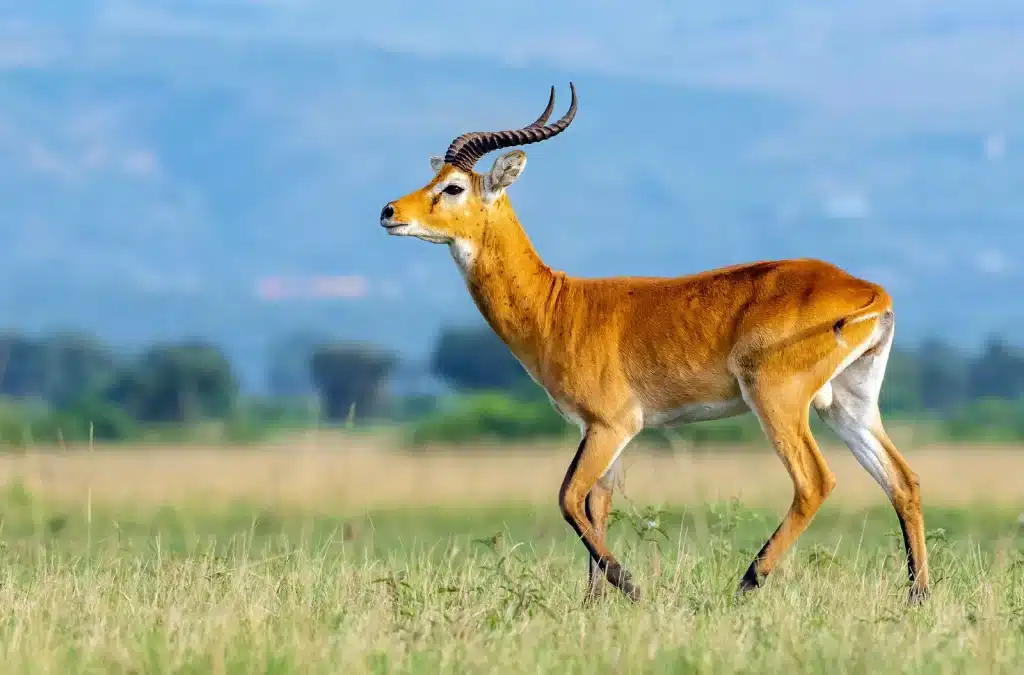In this post, we’ll embark on an alphabetical adventure, exploring 21 fascinating creatures whose names commence with the 11th letter, K.
Prepare to encounter various animals, from the cuddly koala to the mighty king cobra.
These remarkable beings will captivate you with their unique traits and intriguing facts, proving that nature’s wonders know no bounds.
Compiled from reputable sources and expert insights, this comprehensive list promises to delight and educate, whether you’re a nature enthusiast or simply curious about the world around you.
Let’s dive in and uncover the marvels of the animal kingdom, one “K” at a time.
Brief Overview Of Animals Starting with the Letter K
| Animal | Habitat | Famous for | Harmful to Humans | |
|---|---|---|---|---|
| 1 | Kangaroo | Australia | Hopping ability, iconic symbol | Not harmful unless provoked |
| 2 | Koala | Eastern and Southern Australia | Cuddly, lazy tree-dwellers | Not harmful |
| 3 | Komodo Dragon | Indonesian islands | Massive, aggressive lizard | Venomous bite, potentially deadly |
| 4 | Kingfisher | Global, near water bodies | Bright plumage, diving for fish | Not harmful |
| 5 | Kiwi | New Zealand | Unique, endangered flightless bird | Not harmful |
| 6 | Kudu | Eastern and Southern Africa | Corkscrew-shaped horns, striped coats | Not harmful unless threatened |
| 7 | Kinkajou | Central and South American rainforests | Cute, honey-loving mammal | Not aggressive |
| 8 | Kookaburra | Australia and New Guinea | Distinctive “laughing” calls | Not harmful |
| 9 | Kakapo | New Zealand | World’s only flightless parrot | Not harmful, very docile |
| 10 | Krill | Antarctic waters | Vital food source for marine animals | Not harmful |
| 11 | Krait | Indian subcontinent | Potent venom, deadly bite | Very harmful |
| 12 | Kangaroo Rat | Southwestern North America | Hopping, the ability to go without water | Not harmful |
| 13 | Kea | New Zealand’s South Island | Intelligent, interacts with humans | Generally not harmful |
| 14 | Kerry Blue Tiger | Ireland | Intelligence, loyalty, and affectionate nature | Not Harmful |
| 15 | Kite (Bird) | Global, near-open landscapes | Graceful soaring abilities | Not harmful |
| 16 | King Cobra | India through Southeast Asia | World’s longest venomous snake | Highly venomous |
| 17 | Kouprey | Cambodia and Vietnam | One of the rarest mammals | Not aggressive |
| 18 | Kodkod | Chile and Argentina | Smallest cat in the Americas | Not harmful |
| 19 | Kestrel | Global | Spectacular hunting dives, hovering abilities | Not harmful |
| 20 | Kob | Sub-Saharan Africa | Lekking mating displays by males | Not harmful unless threatened |
| 21 | Kook | Forests to urban areas | Melodious calls, friendly nature, pest control | Not harmful, faces habitat loss |
The animal kingdom brims with an astonishing diversity of life, each species bearing unique traits that capture our imagination.
Among this vast array, those whose names commence with the letter “K” stand out, offering a captivating glimpse into nature’s marvels.
From the lush rainforests to the arid deserts, these “K” creatures have adapted to thrive in an incredible range of habitats, showcasing remarkable physical features and behaviors that defy our expectations.
Whether the king cobra’s raw power or the kookaburra’s endearing antics, these animals challenge our perceptions and instill a profound sense of wonder.
The Most Popular and Fascinating
1. Kangaroo

- Iconic Australian marsupials
- Known for powerful hind legs
- Use tails for balance while hopping
- Can cover long distances in single leaps
Among Australia’s most iconic creatures, kangaroos are instantly recognizable marsupials renowned for their powerful hind legs and distinctive hopping movements.
They thrive across diverse Australian landscapes, from open grasslands to dense forests, traversing substantial distances with remarkable leaps aided by their strong legs and tails for balance.
In addition to their physical prowess, kangaroos have cultural significance.
They represent endurance and strength in Aboriginal myths and national symbols like emblems and coins.
2. Koala
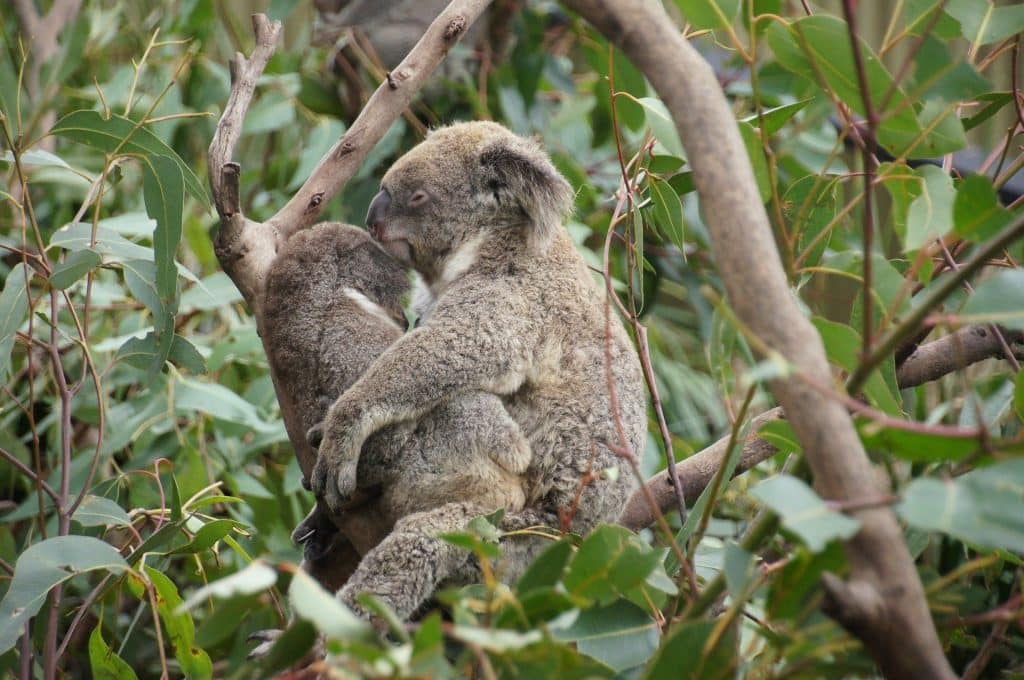
- Cuddly Australian tree-dwellers
- Stout, tailless bodies with fuzzy ears
- Highly specialized eucalyptus leaf diet
- Sleep up to 20 hours per day
Endearingly called “cuddly natives,” koalas are unmistakable Australian marsupials distinguished by their stout, tailless bodies and large, fuzzy ears.
With a highly specialized diet consisting almost exclusively of eucalyptus leaves, these tree-dwelling creatures have adapted to derive necessary hydration and nutrients, albeit at the cost of low energy intake, leading them to sleep up to 20 hours per day.
Koalas are cherished as an integral part of Australia’s natural heritage.
They are iconic symbols in conservation efforts, raising awareness and protecting their vulnerable populations from threats like habitat destruction and climate change.
3. Komodo Dragon
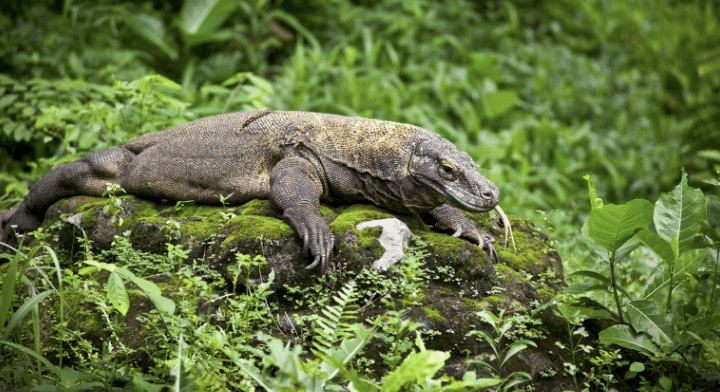
- Largest living lizard species
- Native to Indonesian islands
- Can reach over 10 feet, 150 lbs
- Sharp claws, venomous bite to hunt large prey
Undoubtedly one of nature’s most formidable reptiles, the Komodo dragon reigns as the largest living lizard species, native to the Lesser Sunda Islands of Indonesia.
These massive predators can reach astounding lengths over 10 feet and weigh 150 pounds.
Their sharp claws, powerful tails, and venomous saliva enable them to hunt and overpower large prey like deer, pigs, and even water buffalo.
While their impressive size and hunting prowess captivate observers, Komodo dragons are classified as vulnerable due to their limited distribution and threats posed by human activities.
Concrete conservation efforts involving habitat protection and anti-poaching measures are necessary to safeguard their survival.
Lesser Known but Intriguing
4. Kingfisher
- Striking, vibrantly colored birds
- Numerous varieties with global distribution
- Skilled hunters, diving to catch fish and aquatic prey
- Cultural folklore depicts their symbolic importance
With their bright plumage and remarkable diving abilities, kingfishers are among the most visually striking birds in the world.
These exquisite creatures come in a kaleidoscope of vivid hues, from brilliant blues and oranges to striking whites and blacks, and they are spread across numerous global varieties.
Remarkably skilled hunters, kingfishers primarily feed by plunging headfirst into bodies of water to seize fish and other aquatic prey with their powerful beaks.
Beyond their arresting appearance, kingfishers have held significant symbolic and mythological roles across various cultures, solidifying their place in folklore and traditions.
5. Kiwi
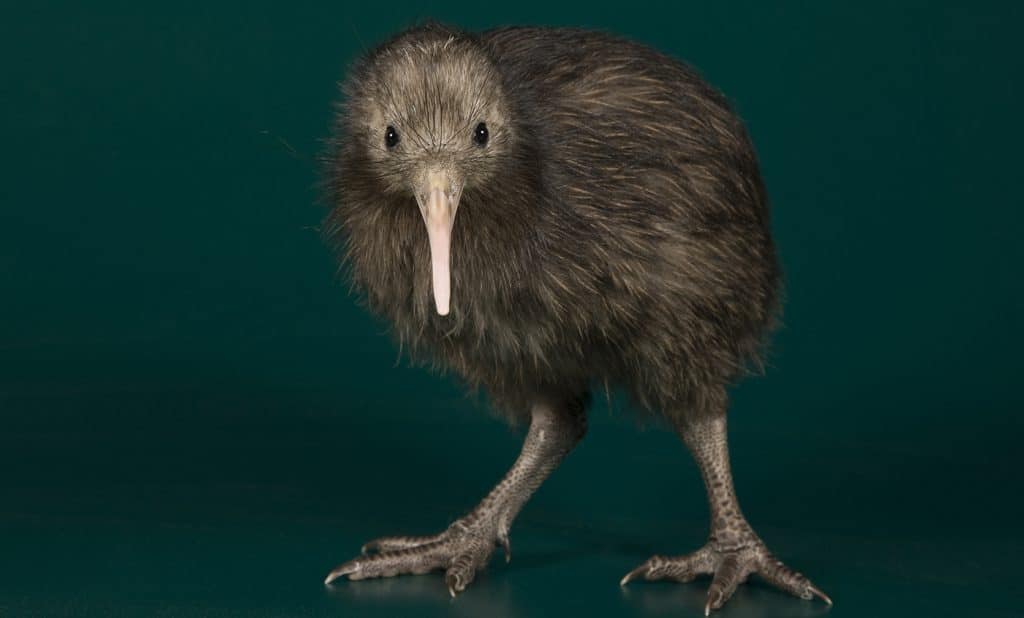
- New Zealand’s iconic, flightless bird
- Nocturnal, with unusual looks and keen senses
- Focus of conservation due to endangered status
- Cultural emblem with ties to Indigenous Maori
The kiwi stands as New Zealand’s most cherished avian icon – a unique, flightless bird that captures the imagination of nature enthusiasts worldwide.
Adapted to a nocturnal lifestyle, Kiwi boasts an unusual appearance with hairlike feathers, long beaks, and highly developed senses of smell and hearing.
With their survival threatened by human activity and introduced predators, kiwis have become the focus of extensive conservation efforts to protect these extraordinary creatures.
Moreover, the kiwi holds immense cultural significance, deeply woven into the traditions of New Zealand’s indigenous Maori people and proudly featured on national symbols.
6. Kudu
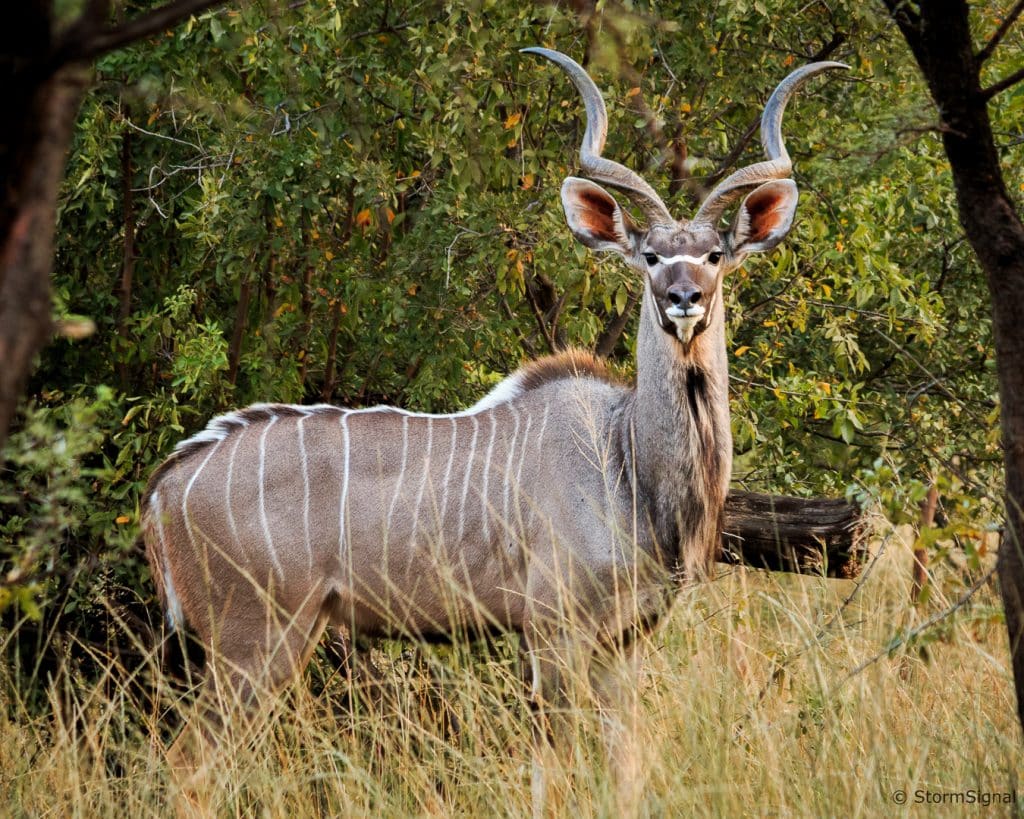
- Emblematic of African wildlife grandeur
- Striking spiral horns and lofty stature
- Browsers adapted to savannas and woodlands
- Key prey and role in ecosystem dynamics
Towering over the African savannas and woodlands, the majestic kudu embodies the continent’s remarkable wildlife splendor.
These large antelopes are unmistakable, with their characteristic spiral horns adorning the males and their graceful, lofty stature.
Well-adapted browsers, kudus graze on leaves, shoots, and fruits, playing a vital role in shaping the vegetation of their habitats.
As important prey for formidable predators like lions and leopards, kudus contribute significantly to the intricate dynamics of their ecosystems, serving as a crucial link in the complex food web.
7. Kinkajou
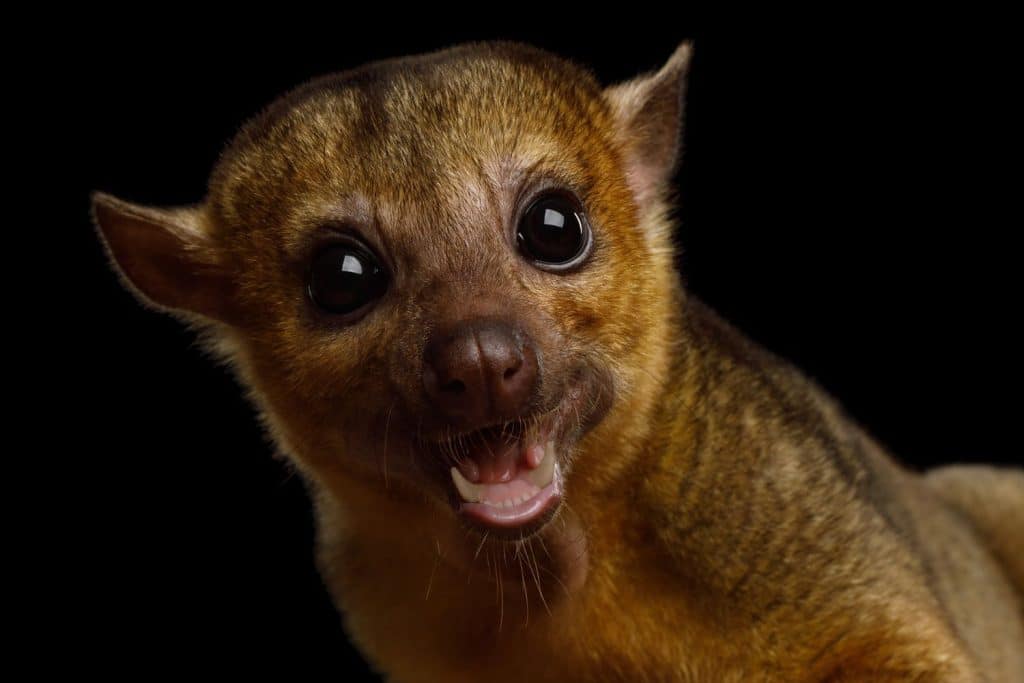
- Unique, lesser-known tropical mammal
- Agile, cat-sized tree-dwellers with prehensile tails
- Nocturnal foragers with a taste for fruit and nectar
- Threatened by habitat loss and pet trade
The kinkajou, a lesser-known tropical mammal, captivates with its unique appearance and remarkable adaptations.
These agile, cat-sized creatures are perfectly suited for their arboreal lifestyle. They use their prehensile tails to navigate the canopies of Central and South American rainforests.
Strictly nocturnal, kinkajous emerge at night to forage for their preferred diet of fruits, nectar, and small prey.
While their endearing looks have made them popular in the illegal pet trade, kinkajous face growing threats from habitat loss and poaching, underscoring the need for concerted conservation efforts to safeguard these fascinating animals.
8. Kookaburra
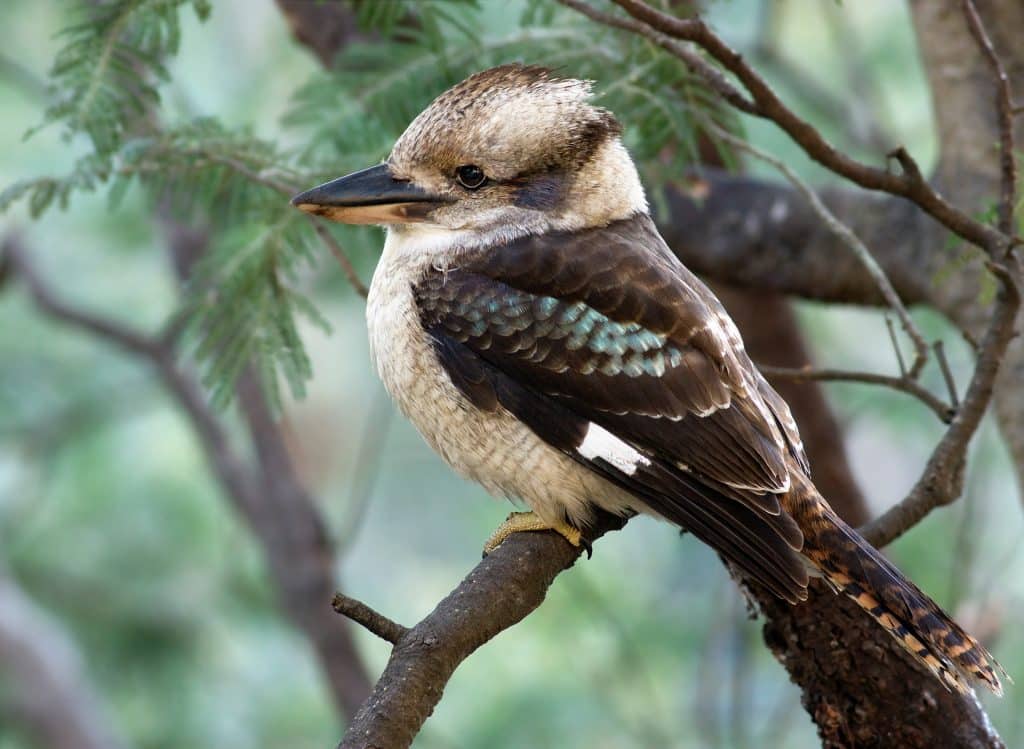
- Known for loud, laughing calls echoing in Australian bushland
- Native tree-nesters found in wooded areas and suburbs
- Hunt insects, reptiles, and rodents by swooping from perches
- Social family groups, a rarity among bird species
Kookaburras are widely renowned for their unmistakable calls that resemble ringing human laughter echoing through the Australian bushland.
Native to Australia and New Guinea, these unique birds thrive in wooded environments where they nest in hollow tree trunks, adapting well even to suburban areas.
With their distinctive beaks, kookaburras hunt various prey, including insects, small reptiles, and rodents, by perching watchfully before swooping down with precision.
Notably, kookaburras exhibit social behaviors, often living in close-knit family groups that cooperate in raising their young – a trait remarkably rare among avian species.
9. Kakapo
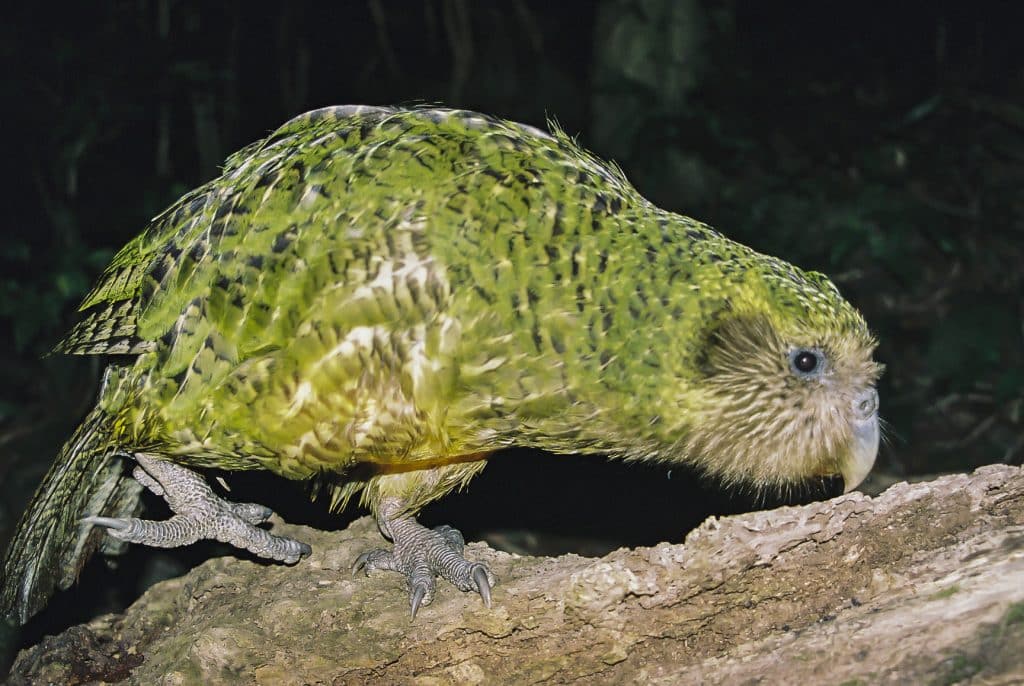
- Critically endangered, nocturnal, moss-green parrot from New Zealand
- World’s only flightless parrot, with waddling gait and musty scent
- Extensive conservation efforts, including breeding programs
- Cultural treasure in Māori traditions, adding urgency to protection
The kakapo, a critically endangered nocturnal parrot native to New Zealand, stands out with its moss-green plumage and soft feathers that blend seamlessly with the forest floor it inhabits.
Remarkably, the kakapo is the world’s only flightless parrot species. It has a distinct waddling gait and a strong, pleasant, musty odor that is used for individual recognition.
Conservation efforts for this extraordinary bird are extensive, involving habitat restoration and pioneering breeding programs, as its numbers have dwindled to critically low levels due to historical hunting and the introduction of predators.
The kakapo holds immense cultural significance in Māori traditions and is regarded as a treasured taonga, lending a poignant urgency to its conservation story.
10. Krill
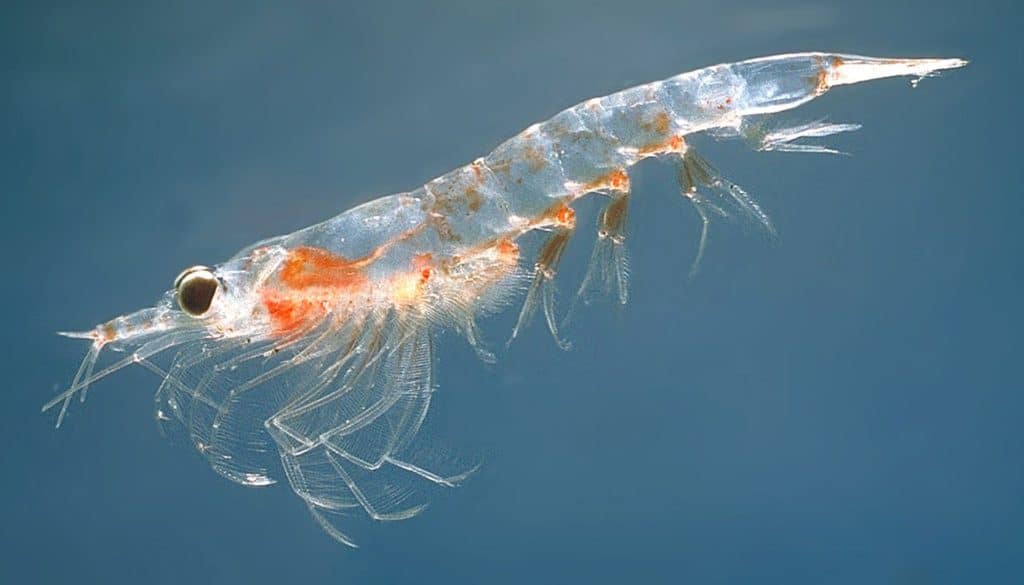
- Tiny crustaceans vital to marine food webs, found in the Southern Ocean
- Only 2cm long, but bioluminescent and visible in dark depths
- Massive swarms influence the ocean’s carbon cycle by feeding
- Harvested for human supplements and aquaculture feed
Krill, tiny crustaceans measuring only about 2 centimeters in length, play a critical role in the marine food chain, predominantly found in the Southern Ocean.
These diminutive creatures are vital to the survival of many marine species like whales, seals, and penguins that rely on them as a food source.
Remarkably, krill are bioluminescent, emitting a faint glow that makes them visible in the dark depths they inhabit.
Their massive swarms can significantly impact the ocean’s carbon cycle by consuming carbon-rich food near the surface and releasing it deep into the water column.
Beyond their ecological powerhouse status, humans also harvest krill for use in dietary supplements and aquaculture feed, highlighting their multifaceted importance to marine and human life.
Lower Tier: Lesser-Known and Unique Species
11. Krait

- Highly venomous snake found in South Asian jungles
- Nocturnal, preying on other snakes and small vertebrates
- Potent neurotoxin used in antivenom production
- Dangerous to humans, requiring caution in encounters
The krait is a highly venomous snake species primarily found lurking in the dense jungles of South Asia.
With a nocturnal lifestyle, these serpents hunt other snakes and small vertebrates under darkness.
Encounters with kraits can be exceedingly dangerous for humans due to their potent neurotoxic venom, which is so toxic that it is used in the production of life-saving antivenom. Extreme caution is advised in areas where these snakes are known to inhabit.
12. Kangaroo Rat

- Small rodents famed for incredible jumping abilities
- Inhabit arid North American deserts, using burrows for shelter
- Play critical roles in seed dispersal and as prey species
- Adapted to harsh environments with specialized traits
Kangaroo rats are small yet remarkable rodents renowned for their incredible jumping abilities, which allow them to traverse the arid environments they call home.
Found across North America’s desert landscapes, these resilient creatures have adapted to extreme temperatures by utilizing intricate burrow systems for shelter.
Beyond their impressive leaping prowess, kangaroo rats play critical roles in their ecosystems, facilitating seed dispersal and serving as vital prey for various predators, underscoring their ecological significance.
13. Kea
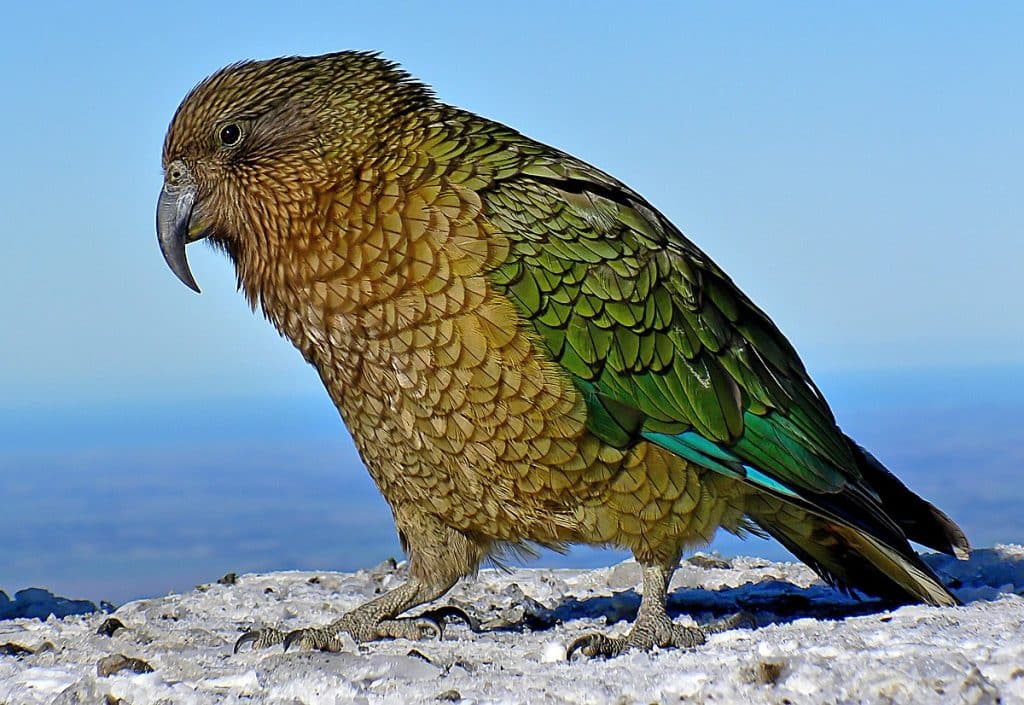
- Intelligent, curious parrots native to New Zealand
- Alpine dwellers feed on plants and small animals
- Threatened by human activities, prompting conservation efforts
- Known for interactions with humans in their habitat
The kea, a remarkable parrot species native to New Zealand, is renowned for its intelligence and insatiable curiosity, often leading to fascinating human interactions in its alpine habitat.
These curious birds live in rugged mountain regions and feed on a diverse diet of plants and small animals.
Unfortunately, human activities such as habitat destruction and introduced predators have threatened the kea’s existence, prompting concerted conservation efforts to protect this unique and endearing species.
14. Kerry Blue Terrier
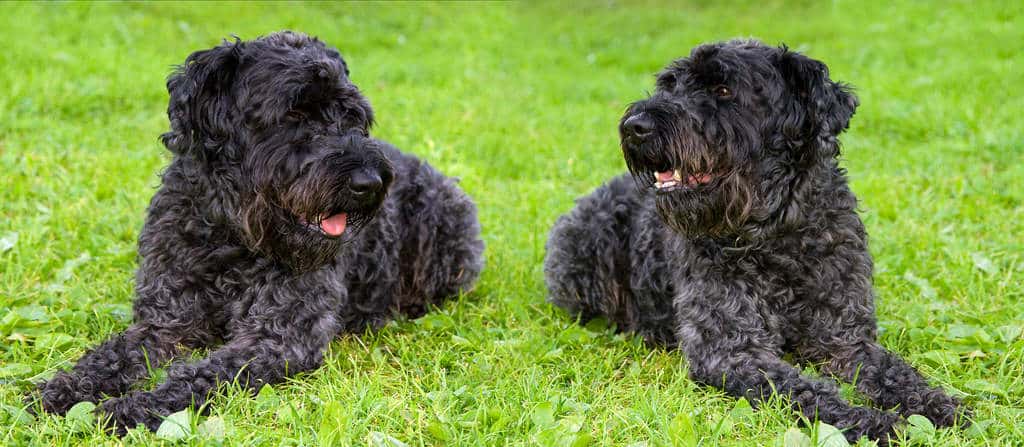
- A rare breed of dog from Ireland
- Distinctive bluish-gray coat and muscular build
- Intelligent, loyal, and great for families
- Originally bred for hunting and guarding
The Kerry Blue Terrier is a rare breed of dog that originated in Ireland.
These energetic terriers are easily recognizable by their distinctive bluish-gray coat and muscular build.
Kerry Blues are known for their intelligence, loyalty, and affectionate nature, making them great family companions.
Originally bred for hunting and guarding, these dogs have a strong prey drive but can also excel in various dog sports and activities when properly trained and exercised.
15. Kite (Bird)
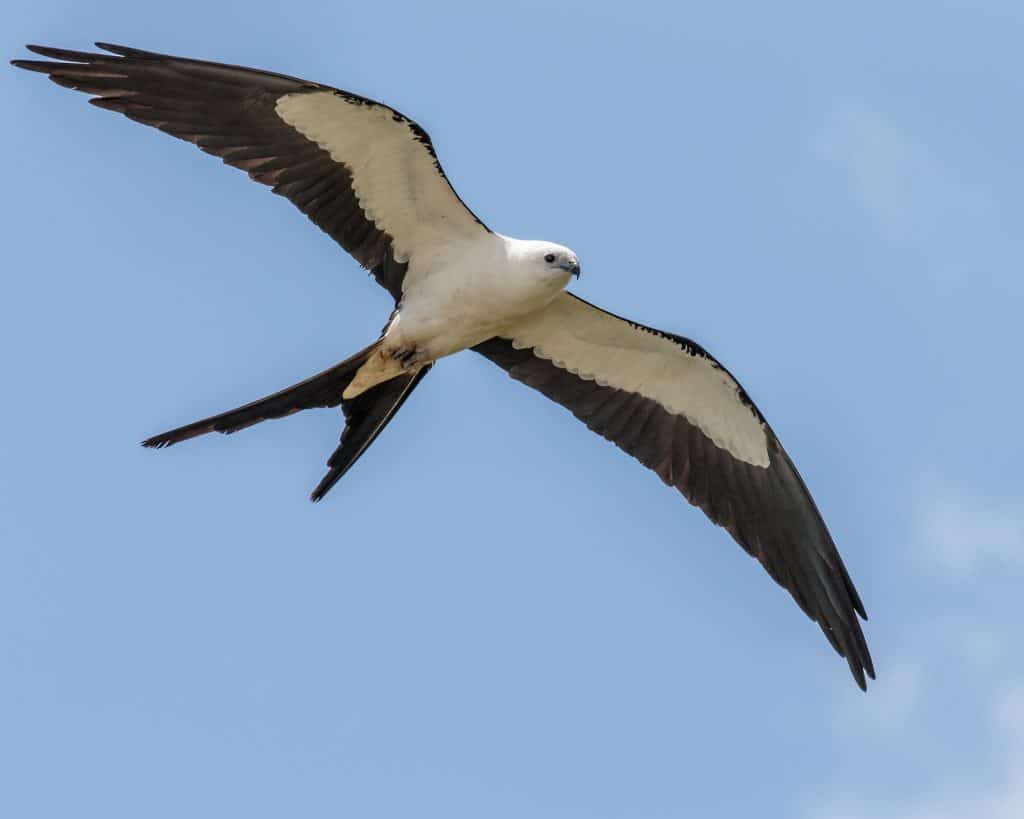
- Raptors are known for distinctive flying patterns and soaring abilities
- Found worldwide in various habitats, preying on small mammals and insects
- Play integral roles in controlling pest populations
- Ecological importance underscores the need for conservation
Kites are a group of remarkable birds of prey, easily identified by their distinctive flying patterns and impressive ability to soar effortlessly on thermal winds.
Found in various habitats across the globe, these skilled hunters primarily feed on small mammals and insects, playing integral roles in controlling pest populations.
Their ecological importance as natural pest controllers underscores the need for conservation efforts to protect these vital avian predators and maintain the delicate balance of the ecosystems they inhabit.
16. King Cobra

- World’s longest venomous snake with potent venom
- Found in forests from India to Southeast Asia, hunting other snakes
- Cultural reverence yet encounters pose a grave danger
- Plays critical roles in ecosystems, a subject of fascination
Revered and feared for its lethal venom, the king cobra is the world’s longest venomous snake, playing a crucial role in its ecosystems and featuring prominently in cultural myths.
Primarily found in forests from India through Southeast Asia, its diet mainly consists of actively hunting other snakes using its keen sense of smell.
While interactions with humans often lead to reverence in local cultures, encounters can prove deadly due to the king cobra’s potent venom, making it a subject of both fear and fascination.
17. Kouprey
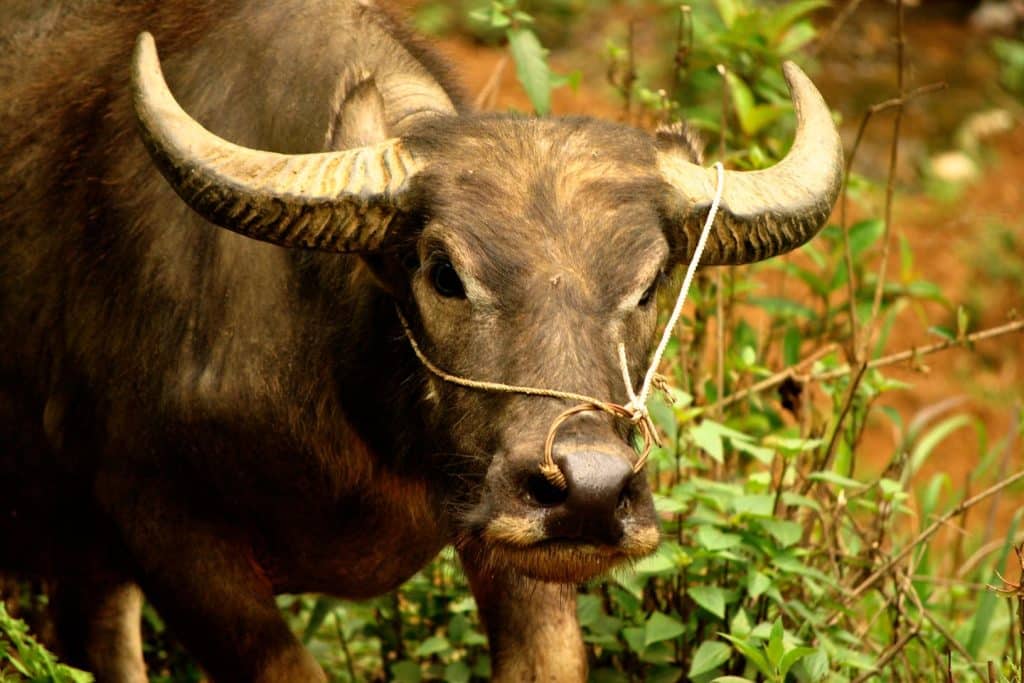
- One of the rarest large mammals, a forest-dwelling bovine
- Native to remote Cambodia, known for curved horns
- Critically low numbers due to habitat loss and poaching
- Focus on conservation efforts and scientific research
As one of the rarest large mammals on Earth, the kouprey is a forest-dwelling bovine found in the remote areas of Cambodia, distinguished by its distinctive curved horns.
Due to the relentless pressures of habitat loss and poaching, its numbers have dwindled to critically low levels, making it a pressing focus of conservation efforts to prevent extinction.
The kouprey’s rarity and elusive nature have also made it a significant subject in scientific research, aiding our understanding of biodiversity and effective conservation methods.
18. Kodkod

- Smallest cat in the Americas with distinctive spotted fur
- Resides in temperate rainforests of Chile and Argentina
- Agile climber, preying on birds and small mammals
- Conservation is crucial due to habitat threat from deforestation
The kodkod, the smallest cat in the Americas, boasts distinctive spotted fur and a preference for the dense vegetative cover typically found in the temperate rainforests of Chile and Argentina.
This agile feline primarily preys on birds and small mammals. It adapts well to an arboreal lifestyle by climbing trees with remarkable agility.
However, conservation efforts are crucial for the Kodkod, as its habitat faces substantial threats from deforestation. This highlights the urgent need to preserve its environment to prevent further population decline.
19. Kestrel

- Small falcons with striking looks and incredible hunting prowess
- Use wind currents to hover and scout for prey like insects and vertebrates
- Widely distributed across various habitats
- Symbolize agility grace in human culture, art, and folklore
Known for their striking appearance and incredible hunting skills, kestrels are small falcons that utilize wind currents to hover effortlessly while scouting for prey.
These remarkable hunters are widely distributed across various habitats, feeding primarily on insects and small vertebrates.
In human culture, kestrels have long been revered as symbols of agility and grace, frequently appearing in art and literature, reflecting their significant role in symbolism and folklore.
20. Kob
- Robust social antelope with ringed horns and lekking courtship displays
- Found in sub-Saharan African savannas, grazing and influencing vegetation
- Social structures, migrations, and predator-prey roles maintain ecosystem balance
- Crucial for ecological processes in their habitats
A social antelope with a robust body and heavily ringed horns, the Kob is known for its lekking behavior during mating seasons, where males engage in elaborate displays to attract females.
Kobs are grazers primarily found in the savannas of sub-Saharan Africa. They influence vegetation patterns and play a pivotal role in the ecosystem.
Their intricate social structures and behaviors, including migrations and predator-prey interactions, are essential for maintaining the delicate ecological balance within their habitats.
21. Kook
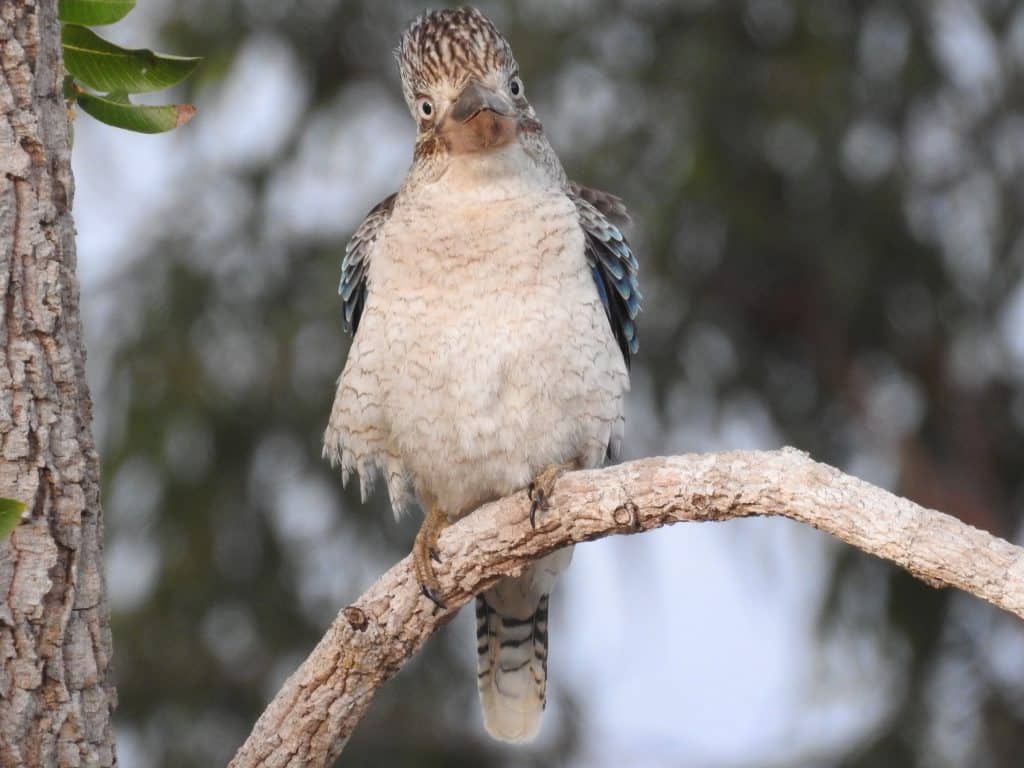
- Vibrant bird known for melodious calls and sociable nature
- Thrives in varied habitats from forests to urban areas
- Feeds on insects and small animals, aids in pest control
- Faces threats like habitat loss, requiring conservation focus
Characterized by its vibrant plumage and melodious calls, the kook is a bird species renowned for its friendly behavior and remarkable adaptability to diverse environments.
It thrives in varied habitats, from dense forests to urban areas, feeding on a diet of insects and small animals.
The kook’s interaction with humans is generally positive, often regarded as a beneficial presence due to its natural pest control capabilities.
However, it also faces significant habitat loss and climate change challenges, necessitating focused conservation efforts to safeguard its future.
Final Thoughts
Our alphabetical journey through the animal kingdom’s “K” creatures has unveiled a remarkable array of species, from the iconic kangaroo to the elusive kodkod.
While diverse in appearance and habitat, these animals share intrinsic value.
They play vital roles in their ecosystems and capture humans with unique traits.
As we continue to explore nature’s wonders, let us appreciate the importance of conserving biodiversity.
Protect habitats, support sustainable practices, and instill a deep respect for all lifeforms – our planet’s rich tapestry depends on it.
Engage further by leaving a comment below: Which incredible “K” animal fascinated you the most? Together, we can ensure these extraordinary beings thrive for generations to come.

